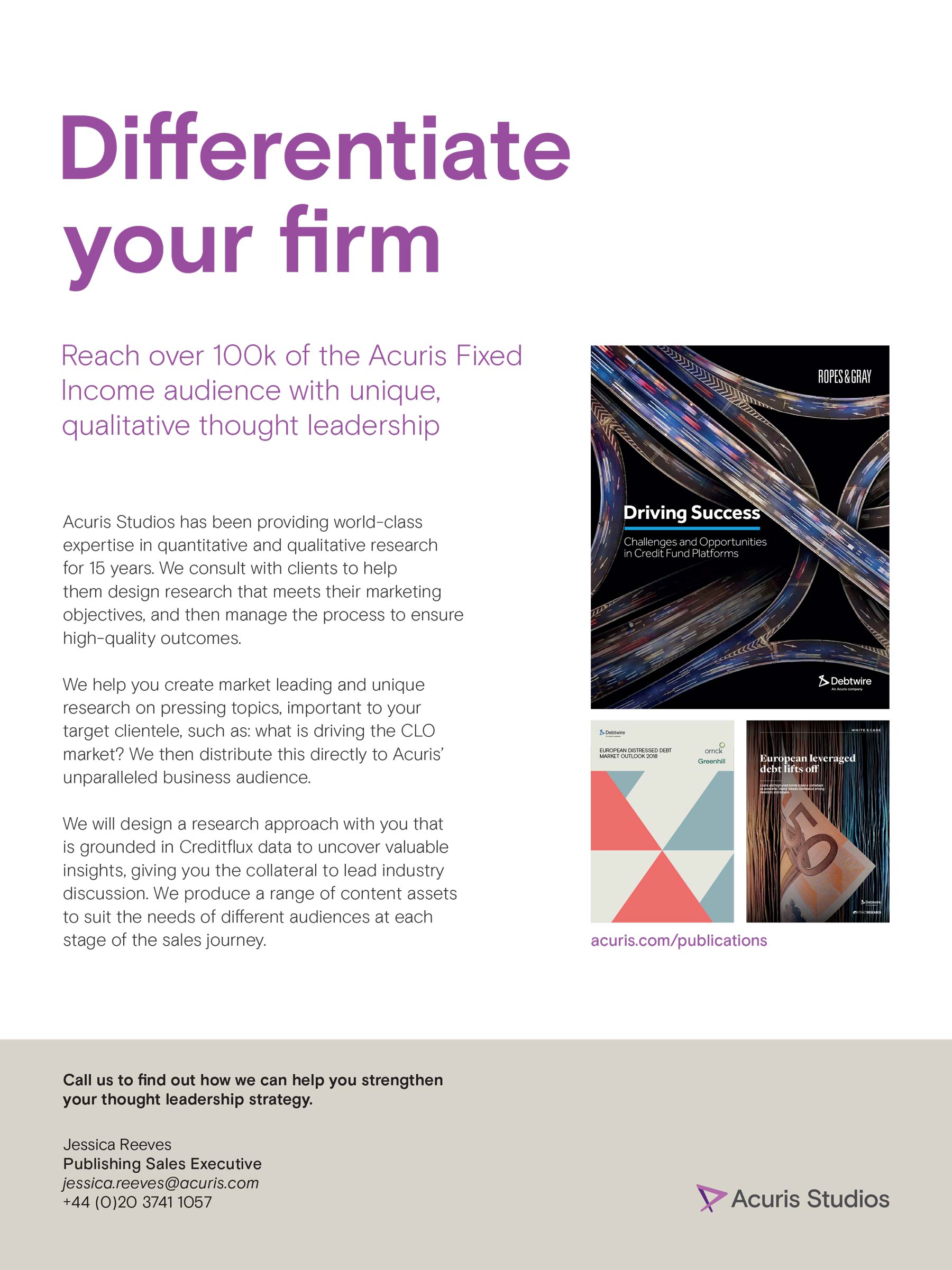

March 2022 | Issue 243
Opinion SRT
Rules require 5% risk retention, but for first loss CRS that is not enough
Rules require 5% risk retention, but for first loss CRS that is not enough

Mascha Canio
Head of credit and insurance linked investments
PGGM
Born:
Brabant, southern Netherlands
Lives:
De Betuwe (quite centrally in The Netherlands) on a dyke in a former farmhouse
Education:
BBA at Nijenrode University in The Netherlands
Hidden talent:
Hobby farming, including not-so-easy-to-source vegetables, such as cavolo nero and okra
Last holiday destination:
Sardinia, where Canio’s in-laws live
Favourite movie:
La vita è bella (Life is Beautiful). It is very touching
Bucket list:
To take a road trip with her husband through Japan and explore the country’s culture and food
Career:
Canio started her career at Shell Pension in 1991, monitoring external managers, before moving to the front office covering emerging markets and high yield. She joined CLO issuer Octagon in 2000 and, after a break from credit, resurfaced at PGGM, where she works in credit risk-sharing.PGGM:
is a not-for-profit cooperative pension fund service provider headquartered in Zeist in The Netherlands. It provides pension management and asset management services, and manages pension assets worth €291 billion for 4.4 million participants.Q.
You nearly had a career as a CLO portfolio manager. How did that transpire?
A. Back in 2000 I was headhunted to join Octagon Credit Investors and build out a European CLO business from London. The timing was not quite right as we had the dotcom crash and then the war in Iraq, so I decided to take a break to travel the world.
When I resumed my career three years later at PGGM, it was initially building out an alpha investment strategy with a focus on fixed income and credit. That played to my strengths as I had previously built high yield and leveraged loan businesses. From the alpha team in PGGM I worked on the first credit risk sharing transaction in 2006, and that is the area I have specialised in since. [PGGM refers to significant risk transfers as credit risk sharing (CRS).]
When I resumed my career three years later at PGGM, it was initially building out an alpha investment strategy with a focus on fixed income and credit. That played to my strengths as I had previously built high yield and leveraged loan businesses. From the alpha team in PGGM I worked on the first credit risk sharing transaction in 2006, and that is the area I have specialised in since. [PGGM refers to significant risk transfers as credit risk sharing (CRS).]
Q.
How has the risk sharing market evolved?A.
The 2006 deal is not too different to the ones today. Since day one we have prioritised alignment of interest. When we invest in a CRS, it is clear the bank will always have more information on the credits and we want them to manage the loan book as if there was no hedge in place, so we think 20% skin in the game is a fair alignment. In 2013 we had securitisation rules mandating 5% risk retention, but for a first loss position in CRS we don’t think that is enough.Our deals are fully funded and one thing we have adapted is cash deposits. We used to leave a deposit with the bank counterparty, but since 2010 we have deposited with custody accounts to limit counterparty risk.
Q.
What are today’s best credit investments?A.
My focus is narrow as I look at credit risk sharing, but the emphasis is on diversified loan portfolios and sound structures. Even if the transaction is blind pool, there needs to be enough diversification. If there is a highly concentrated portfolio we will assess the risk based on what happens if the largest position defaults and how that corresponds to the thickness of the tranche.
If you are seeking high concentration as an equity tranche investor in structured credit, then you would need to do the analysis on the names. We think it is best to keep it simple. As there are so many smart people in this world when it comes to things like this, there is a danger of coming up with unnecessarily complicated ideas, when the simple solution works just as well.
Q.
What is the best investment you’ve made?
A.
The first risk sharing transaction I did with PGGM in 2006. It was one of the first deals in this market and it generated one of our highest returns. We invested about €450 million and the underlying portfolio was the largest we have been involved in at €15.5 billion.Q.
And the worst?
A.
In the 1990s, one of the portfolios I managed at Shell pension fund was emerging market debt with exposure to local Russian government bonds, which were hit by the default in August 1998. Since then I have tended not to invest in certain emerging markets. It is difficult for any external party to have an insight into those credits and we want to work with banks that understand their borrowers.Q.
Where is the market heading?
A.
There is still an enormous amount of liquidity from covid support programmes. And consumers have massive amounts of savings — look at China’s developing middle segment. That makes it difficult to know how things will normalise, but we expect it might take SMEs longer.Q.
What needs to change about the way your industry does business?
A.
Good-quality data. We spend a lot of time looking through the data we need from banks. For new issuers, it can take a bit of back and forth. It would be great if it becomes more standardised.Global credit funds & CLO's
March 2022 | Issue 243
Published in London & New York.
Copyright Creditflux. All rights reserved. Check our Privacy Policy and our Terms of Use.






















